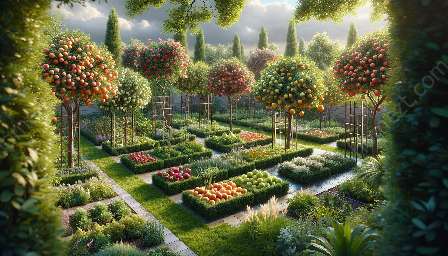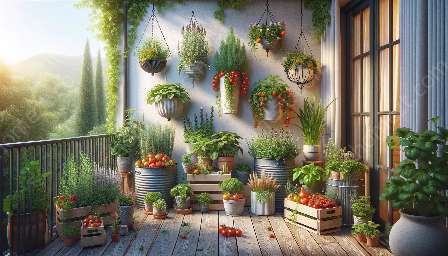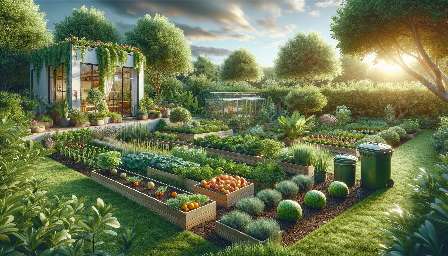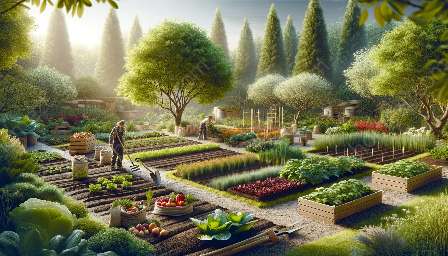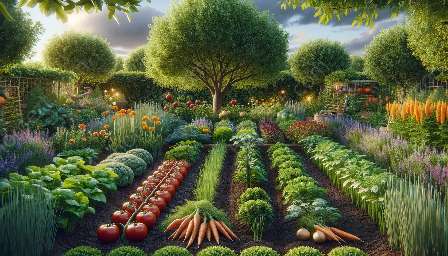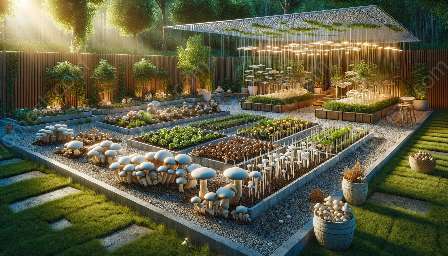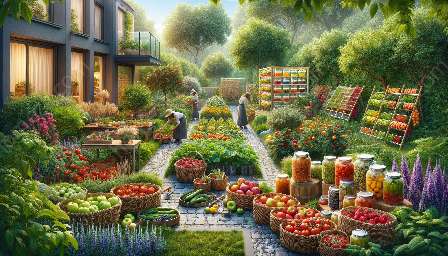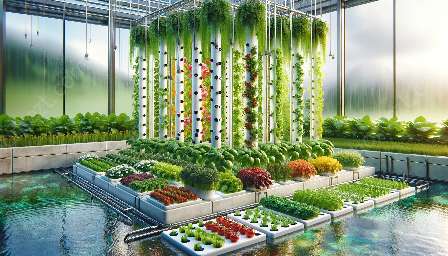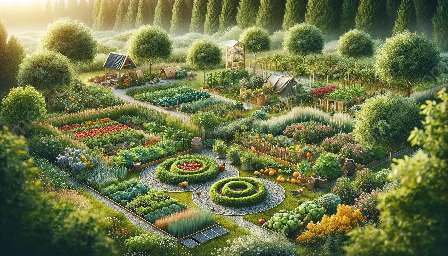Harvesting and Preserving Edible Plants and Fruits
Growing your own edible plants and fruits in your garden can be a rewarding and sustainable way to enhance your diet and elevate your culinary creations. However, it's important to understand the different methods of harvesting and preserving these bountiful offerings to ensure that their freshness and nutrition are maintained for the long term. This topic cluster will explore various techniques for harvesting and preserving edible plants and fruits, providing you with valuable knowledge to maximize the enjoyment and benefits of your home-grown produce.
Harvesting Techniques
Harvesting edible plants and fruits at the right time is crucial for ensuring optimal flavor and nutritional content. There are various factors to consider when determining the best time to harvest, including the type of plant or fruit, its ripeness, and environmental conditions. Here are some common harvesting techniques you can use for different types of produce:
- Hand-harvesting: This involves carefully picking individual fruits or vegetables by hand. It's ideal for delicate produce such as berries and herbs, as well as for ensuring minimal damage to the plant.
- Cutting: Some fruits and vegetables, like lettuce and squash, are best harvested by cutting them from the plant using a sharp knife or shears. This method helps to prevent bruising and damage to the plant.
- Twisting: For certain fruits, such as melons and pumpkins, twisting them gently until they separate from the vine is an effective harvesting technique. It's important to handle the produce with care to avoid any unnecessary stress to the plant.
- Timing: Understanding the specific harvest window for each type of plant is important. For example, tomatoes are best harvested when they have reached full color and are slightly soft to the touch, while root vegetables like carrots and beets are typically harvested once they have reached a mature size.
Preservation Methods
After harvesting your home-grown produce, it's essential to employ effective preservation methods to extend the shelf life and maintain the quality of edible plants and fruits. Here are some popular preservation techniques you can use to ensure that your garden's bounty stays fresh and flavorful for as long as possible:
- Canning: Canning is a traditional method of preserving fruits and vegetables by sealing them in airtight containers, typically through the process of water bath canning or pressure canning. This method effectively destroys microorganisms and enzymes that cause spoilage, allowing you to store your produce for an extended period.
- Freezing: Freezing is a convenient and versatile preservation method that helps retain the natural flavors and nutrients of fruits and vegetables. By freezing produce at the peak of freshness, you can enjoy your home-grown bounty all year round.
- Drying: Drying, or dehydrating, is a method of removing moisture from fruits, vegetables, and herbs, which inhibits the growth of bacteria, yeasts, and molds. Dried produce can be stored for long periods and used in a variety of culinary applications.
- Pickling: Pickling is a preservation technique that involves immersing fruits or vegetables in a brine or vinegar solution. This process not only extends the shelf life of the produce but also infuses them with unique flavors and textures.
Benefits of Harvesting and Preserving Edible Plants and Fruits
The practice of harvesting and preserving edible plants and fruits from your garden offers a multitude of benefits beyond the satisfaction of enjoying your own home-grown produce. Some of these benefits include:
- Access to Fresh, Nutrient-Rich Food: By optimizing your harvesting and preservation techniques, you can ensure that the fruits and vegetables from your garden retain their essential nutrients, providing you with a source of fresh and wholesome food.
- Reduction of Food Waste: Properly preserved produce is less likely to go to waste, contributing to a more sustainable and environmentally friendly approach to food consumption.
- Culinary Creativity: With a well-stocked supply of preserved fruits and vegetables, you can explore new recipes and cooking methods, enhancing your culinary repertoire and creativity in the kitchen.
- Cost Savings: Harvesting and preserving your own produce can lead to significant cost savings compared to purchasing store-bought equivalents, especially during peak growing seasons.
- Connection to Nature: Engaging in the process of harvesting and preserving edible plants and fruits fosters a deeper connection to the natural world and reinforces the cycle of growth and sustenance.
Conclusion
Harvesting and preserving edible plants and fruits from your garden is a fulfilling and beneficial practice that empowers you to savor the fruits of your labor throughout the year. By mastering the art of timing your harvests and employing effective preservation techniques, you can extend the lifespan of your home-grown produce while maximizing its flavor and nutritional value. Embracing these methods not only contributes to a more sustainable lifestyle but also enriches your culinary experiences and deepens your appreciation for the natural abundance that your garden provides.

